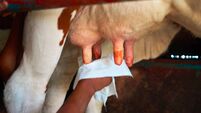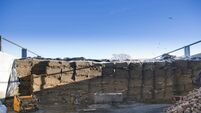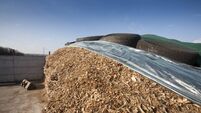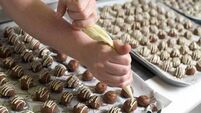A challenging year continues to throw up more curveballs for farmers
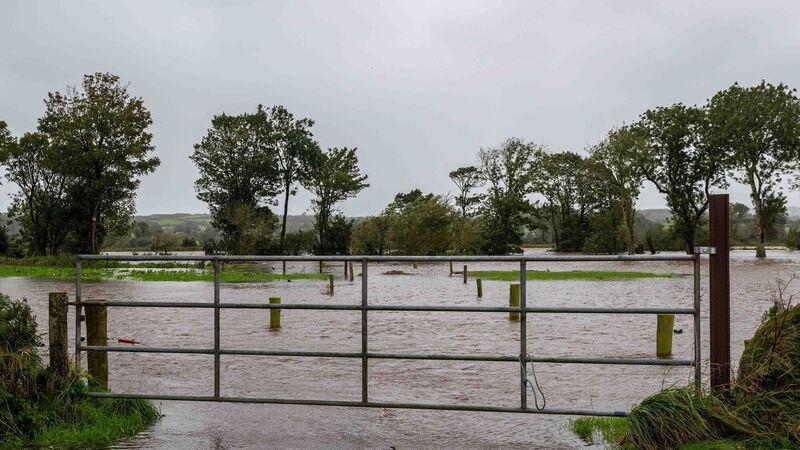
Storms with torrential rain and high winds causing localised flooding, fallen trees and hazardous driving conditions. Fields in Caheragh totally flooded with water due to the River Ilen bursting its banks. Picture: Andy Gibson
Storm Babet has made the pitch unplayable and winter has well and truly kicked in for livestock farms all around the country. Lots of Maize has yet to be harvested, while the drilling of winter cereals has come to a standstill.
A challenging year continues to throw up more curveballs for our industry, all while we are being rolled out as the destroyers of the planet. As an industry, we need to be more vocal in letting the consumer know all of the changes we have made to our business practices to comply with environmental responsibilities.
Anyway, back to the onset of winter and housing stock full-time.
Ground conditions have deteriorated significantly in the last few weeks due to the sheer volume of rain. Paddocks have not been grazed out very well as a result and damage was unavoidable, unfortunately, before stock could be moved or housed.
We must also appreciate that regardless of weather conditions as we head into November, grass is low in dry matter, low in energy and relatively high in protein. This means that it is of low feed value and this must be taken into account when deciding what animals should remain out to graze it, if any can actually stay out.
Many Suckler farms, if they are not too heavily stocked will still only have some of their animals housed up until now. However, housing is not far away once all of the grass has gone or weather conditions deteriorate further, not that it could get much worse!
I housed all bar maiden heifers on day two of Babet and am very happy to have them settled in now for the winter. Getting young calves used to creep gates and introducing them to some meal and forage takes a bit of time but is a very important job, as it helps avoid injury to calves and reduces their stress levels. Fresh cows will be back bulling too, so having the calves in their own bed is important.
Management of a suckler herd changes a lot once they are indoors. Most Sucklers seem to calve without assistance when outdoors. Once indoors however with less exercise and a typically lower plain of nutrition, cows are often slower to calve and some will require assistance. I have found this to be the case in the last few weeks as I have housed close-up cows for convenience as daylight hours get shorter.
A well-managed dosing protocol must be put in place in suckler herds to optimise herd performance. Make sure that you are using the best product for the target parasites and that you use the correct rate for optimum effect. From those who did dung sampling as part of the Suckler welfare scheme, it has been reported that many herds are positive for worms and also Rumen or Liver fluke or both.
Cows with young calves must supply sufficient milk to grow the calf well while also requiring energy to go back in calf. Silage results should determine if these cows require supplementation or not once housed. Breeding will start for next Autumns calf very soon, so insuring cows are in a positive plane of nutrition is important. It is always advisable to have these cows settled indoors in advance of breeding to reduce nutritional stress.
Cows with calves at foot must be fed accordingly. Try to supply sufficient energy for milk production remembering that she is also growing her next calf. If cows are in good condition at housing their diet should aim to maintain that condition up to drying off.
Although most spring cows are only dry or soon will be it is still a good time to make sure that your handling facilities are ready for the next calving season. Once all animals are indoors, then there is less space and time to update or install facilities.
Most farms now have a purpose built calving gate which restrains the cow at calving if necessary. These gates are also ideal for getting a calf started suckling safely. Is your calving jack in full working order and are the ropes fit for purpose?
Insure that your calving camera is working correctly to avoid un-necessary visits to the shed disturbing cows and particularly heifers in the process of calving. I invested in a new health and heat monitoring system in late 2022 which also gives calving alerts and I am delighted with this new technology as a further technology aid at calving and breeding.
Sucklers can get stressed around calving if disturbed as they are not as used to human contact.
Is it possible to clean out and disinfect calving boxes between calving’s? If not, can you explore the option of making this a possibility? Hygiene around calving is so important for calf health.
When cows and calves are housed it is important that the pens are not overcrowded. Most Suckler cows are housed on Slats or Cubicles and with either it is best practice from an animal performance point of view that calves have access to a separate creep area.
A calf creep area doesn’t need to be too elaborate but should provide the basics of a warm, dry, clean bed with access to feed and clean water. Ventilation in these areas is also very important. Any draughts can contribute to respiratory issues such as pneumonia.
A good deep bed of straw and no draughts at calf level will reduce issues significantly. I am trialling a deep layer of woodchip under the straw this year, I will revert with comment later in the winter. If your farm has a history of calf pneumonia, you really should consider vaccination.

